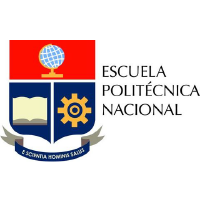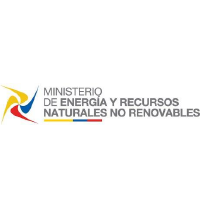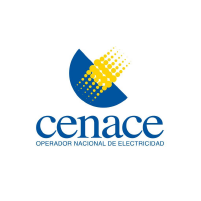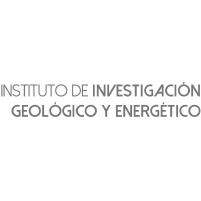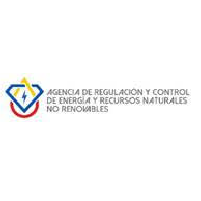Estudio Numérico Mediante CFD del Proceso de Enfriamiento con Intercambiadores de Calor en Sistemas Computacionales
Numerical Study Using CFD of the Cooling Process with Heat Exchangers in Computer Systems
Cómo citar
Descargar cita
Mostrar biografía de los autores
Artículos similares
- Fernando Toapanta, Melany Oña, Estudio Numérico con CFD de la Refrigeración en una Cabina Vehicular con dos Refrigerantes R32 y R600a , Revista Técnica "energía": Vol. 21 Núm. 1 (2024): Revista Técnica "energía", Edición No. 21, ISSUE I
- William Quitiaquez, Andrés Argüello, Isaac Simbaña, Patricio Quitiaquez, Evaluación del Comportamiento de Motores a Gasolina Mediante Simulación del Flujo de Aire a Través del Cuerpo de Aceleración , Revista Técnica "energía": Vol. 20 Núm. 1 (2023): Revista Técnica "energía", Edición No. 20, ISSUE I
- Daniels Mendoza, Isai Nina , Edwin Cuadros, Análisis de una Planta Piloto Geotérmica con Ciclo Binario de Media Entalpia, Ubinas, Moquegua. , Revista Técnica "energía": Vol. 21 Núm. 2 (2025): Revista Técnica "energía", Edición No. 21, ISSUE II
- Isaac Simbaña, William Quitiaquez, Patricio Cabezas, Patricio Quitiaquez, Estudio comparativo de la eficiencia de colectores solares de placa plana rectangular y triangular mediante el método de elementos finitos , Revista Técnica "energía": Vol. 20 Núm. 2 (2024): Revista Técnica "energía", Edición No. 20, ISSUE II
- Isaac Simbaña, Sarai Mena, Silvana Chasipanta, Análisis de la Eficiencia Energética en un Horno Eléctrico con la Implementación de un Ventilador Convectivo , Revista Técnica "energía": Vol. 22 Núm. 1 (2025): Revista Técnica "energía", Edición No. 22, ISSUE I
- Alex Rivera, William Quitiaquez, Isaac Simbaña, Patricio Quitiaquez, Estudio de la Generación y Distribución de Vapor en un Hospital para la Mejora de Eficiencia Energética mediante Termografía, Ultrasonido y Analizador de Gases , Revista Técnica "energía": Vol. 20 Núm. 2 (2024): Revista Técnica "energía", Edición No. 20, ISSUE II
- Karina Tituana, Vanessa Guillén, Análisis de Percepción del Confort Térmico de Edificaciones Residenciales en la Ciudad de Loja basado en la Norma Ecuatoriana de Eficiencia Energética , Revista Técnica "energía": Vol. 21 Núm. 1 (2024): Revista Técnica "energía", Edición No. 21, ISSUE I
- William Quitiaquez, Hugo Meneses, Patricio Quitiaquez, Isaac Simbaña, Regeneración de Componentes Deteriorados de Motores de Combustión Interna Utilizados en Centrales Térmicas , Revista Técnica "energía": Vol. 21 Núm. 2 (2025): Revista Técnica "energía", Edición No. 21, ISSUE II
- Kleber Zhañay, Cristian Leiva, Erika Pilataxi, William Quitiaquez, Modelo de Correlación Desgaste - Cantidad de Sedimentos para la Programación de Mantenimiento Preventivo de una central Hidroeléctrica , Revista Técnica "energía": Vol. 21 Núm. 2 (2025): Revista Técnica "energía", Edición No. 21, ISSUE II
- Graciela Colomé, Omar Ramos, Diego Echeverría, Metodología de Identificación de Modos Oscilatorios en Datos Tipo Ambiente de Mediciones PMU , Revista Técnica "energía": Vol. 21 Núm. 1 (2024): Revista Técnica "energía", Edición No. 21, ISSUE I
También puede Iniciar una búsqueda de similitud avanzada para este artículo.
Artículos más leídos del mismo autor/a
- William Quitiaquez, Isaac Simbaña, Robinson Caizatoa, César Isaza, César Nieto, Patricio Quitiaquez, Fernando Toapanta, Análisis del rendimiento termodinámico de una bomba de calor asistida por energía solar utilizando un condensador con recirculación , Revista Técnica "energía": Vol. 16 Núm. 2 (2020): Revista Técnica "energía", Edición No. 16
- Carlos Maigua, William Quitiaquez, Isaac Simbaña, Patricio Quitiaquez, Fernando Toapanta, César Isaza, Diseño de un Sistema de Monitoreo de Vibraciones Mecánicas en Generadores Hidroeléctricos de Media Potencia , Revista Técnica "energía": Vol. 17 Núm. 1 (2020): Revista Técnica "energía", Edición No. 17, ISSUE I
- Isaac Simbaña, William Quitiaquez, Patricio Cabezas, Patricio Quitiaquez, Estudio comparativo de la eficiencia de colectores solares de placa plana rectangular y triangular mediante el método de elementos finitos , Revista Técnica "energía": Vol. 20 Núm. 2 (2024): Revista Técnica "energía", Edición No. 20, ISSUE II
- Jonnathan Morales, William Quitiaquez, Isaac Simbaña, Modelos de optimización matemática aplicables al sector downstream y midstream del petróleo. Revisión de la literatura y dirección de investigaciones futuras , Revista Técnica "energía": Vol. 17 Núm. 1 (2020): Revista Técnica "energía", Edición No. 17, ISSUE I
- William Quitiaquez, Andrés Argüello, Isaac Simbaña, Patricio Quitiaquez, Evaluación del Comportamiento de Motores a Gasolina Mediante Simulación del Flujo de Aire a Través del Cuerpo de Aceleración , Revista Técnica "energía": Vol. 20 Núm. 1 (2023): Revista Técnica "energía", Edición No. 20, ISSUE I
- Alex Rivera, William Quitiaquez, Isaac Simbaña, Patricio Quitiaquez, Estudio de la Generación y Distribución de Vapor en un Hospital para la Mejora de Eficiencia Energética mediante Termografía, Ultrasonido y Analizador de Gases , Revista Técnica "energía": Vol. 20 Núm. 2 (2024): Revista Técnica "energía", Edición No. 20, ISSUE II
- Isaac Simbaña, William Quitiaquez, José Estupiñán, Fernando Toapanta-Ramos, Leonidas Ramírez, Evaluación del rendimiento de una bomba de calor de expansión directa asistida por energía solar mediante simulación numérica del proceso de estrangulamiento en el dispositivo de expansión , Revista Técnica "energía": Vol. 19 Núm. 1 (2022): Revista Técnica "energía", Edición No. 19, ISSUE I
- William Quitiaquez, Christian Cholca, Erika Pilataxi, Fernando Toapanta, Evaluación de Redes de Tuberías con Configuración Flexible para el Transporte de Hidrocarburo , Revista Técnica "energía": Vol. 20 Núm. 1 (2023): Revista Técnica "energía", Edición No. 20, ISSUE I
- William Quitiaquez, Jorge Chimarro, John Valarezo, Patricio Quitiaquez, César Melendrez, Fernando Toapanta, Validación de un Prototipo de Medidor de Energía Trifásico como Apoyo para una Auditoría Energética , Revista Técnica "energía": Vol. 17 Núm. 2 (2021): Revista Técnica "energía", Edición No. 17, ISSUE II
- Kleber Zhañay, Cristian Leiva, Erika Pilataxi, William Quitiaquez, Modelo de Correlación Desgaste - Cantidad de Sedimentos para la Programación de Mantenimiento Preventivo de una central Hidroeléctrica , Revista Técnica "energía": Vol. 21 Núm. 2 (2025): Revista Técnica "energía", Edición No. 21, ISSUE II
El presente artículo científico trata el estudio y simulación de un radiador que se basa en un intercambiador de calor tubular de flujo cruzado, el cual tiene un propósito de refrigerar el procesador, tarjeta gráfica de una CPU o diversos hardware en los sistemas de computación. Se realizan diversas simulaciones en el programa ANSYS teniendo varias temperaturas de ingreso que van en rangos desde 75 °C hasta 90 °C y con flujos másicos diferentes. Los resultados muestran que, al aumentar la temperatura de ingreso del fluido a refrigerar, la salida de este fluido tambien aumenta. Sin embargo, cuando se aumenta el flujo másico existe una merma en el rechazo de calor en los dispositivos computacionales.
Visitas del artículo 1320 | Visitas PDF 718
Descargas
1] A. Addagatla, J. Fernandes, D. Mani, D. Agonafer, and V. Mulay, “Effect of warm water cooling for an isolated hybrid liquid cooled server,” Annu. IEEE Semicond. Therm. Meas. Manag. Symp., vol. 2015-April, pp. 203–207, 2015, doi: 10.1109/SEMI-THERM.2015.7100161.
[2] K. Nemati, T. Gao, B. T. Murray, and B. Sammakia, “Experimental characterization of the rear door fans and heat exchanger of a fully-enclosed, hybrid-cooled server cabinet,” Annu. IEEE Semicond. Therm. Meas. Manag. Symp., vol. 2015-April, pp. 155–162, 2015, doi: 10.1109/SEMI-THERM.2015.7100154.
[3] M. A. Kadhim, Y. T. Al-Anii, N. Kapur, J. L. Summers, and H. M. Thompson, “Performance of a mixed mode air handling unit for direct liquid-cooled servers,” Annu. IEEE Semicond. Therm. Meas. Manag. Symp., pp. 172–178, 2017, doi: 10.1109/SEMI-THERM.2017.7896926.
[4] S. J. Ovaska, R. E. Dragseth, and S. A. Hanssen, “Impact of retrofitted CPU water cooling on supercomputer performance and power consumption,” Conf. Proc. - IEEE SOUTHEASTCON, vol. 2016-July, pp. 1–2, 2016, doi: 10.1109/SECON.2016.7506669.
[5] N. Raja Kuppusamy and L. Poh Seng, “Study on thermal and hydrodynamic performance of a triple fluid heat exchanger with different passes and rows,” Energy Procedia, vol. 158, pp. 5901–5906, 2019, doi: 10.1016/j.egypro.2019.01.534.
[6] D. P. Kulkarni and R. Steinbrecher, “Compact liquid enhanced air cooling thermal solution for high power processors in existing air-cooled platforms,” Annu. IEEE Semicond. Therm. Meas. Manag. Symp., vol. Part F1214, pp. 81–85, 2016, doi: 10.1109/SEMI-THERM.2016.7458449.
[7] G. Tang, Y. Han, and X. Zhang, Compact heat exchanger design and energy efficiency optimization for data centre cooling application, vol. 2018-Febru. 2018.
[8] Y. Fan, C. Winkel, D. Kulkarni, and W. Tian, “Analytical Design Methodology for Liquid Based Cooling Solution for High TDP CPUs,” Proc. 17th Intersoc. Conf. Therm. Thermomechanical Phenom. Electron. Syst. ITherm 2018, pp. 582–586, 2018, doi: 10.1109/ITHERM.2018.8419562.
[9] T. A. Shedd and R. A. Morell, “Cooling 11.6 TFlops (1500 watts) in an office environment,” Annu. IEEE Semicond. Therm. Meas. Manag. Symp., pp. 122–124, 2017, doi: 10.1109/SEMI-THERM.2017.7896918.
[10] G. R. Wagner et al., “Test results from the comparison of three liquid cooling methods for high-power processors,” Proc. 15th Intersoc. Conf. Therm. Thermomechanical Phenom. Electron. Syst. ITherm 2016, pp. 619–624, 2016, doi: 10.1109/ITHERM.2016.7517605.
[11] A. C. Kheirabadi and D. Groulx, “Cooling of server electronics: A design review of existing technology,” Appl. Therm. Eng., vol. 105, no. 2016, pp. 622–638, 2016, doi: 10.1016/j.applthermaleng.2016.03.056.
[12] S. O. Tan and H. Demirel, “Performance and cooling efficiency of thermoelectric modules on server central processing unit and Northbridge,” Comput. Electr. Eng., vol. 46, pp. 46–55, 2015, doi: 10.1016/j.compeleceng.2015.07.012.
[13] A. C. Kheirabadi and D. Groulx, “Experimental evaluation of a thermal contact liquid cooling system for server electronics,” Appl. Therm. Eng., vol. 129, pp. 1010–1025, 2018, doi: 10.1016/j.applthermaleng.2017.10.098.
[14] W. Wang, L. Chen, Y. Kong, L. Yang, Y. Niu, and X. Du, “Cooling performance evaluation for double-layer configuration of air-cooled heat exchanger,” Int. J. Heat Mass Transf., vol. 151, p. 119396, 2020, doi: 10.1016/j.ijheatmasstransfer.2020.119396.
[15] S. Maalej, A. Zayoud, I. Abdelaziz, I. Saad, and M. C. Zaghdoudi, “Thermal performance of finned heat pipe system for Central Processing Unit cooling,” Energy Convers. Manag., vol. 218, no. February, p. 112977, 2020, doi: 10.1016/j.enconman.2020.112977.
[16] Y. Sun, T. Wang, L. Yang, L. Hu, and X. Zeng, “Research of an integrated cooling system consisted of compression refrigeration and pump-driven heat pipe for data centers,” Energy Build., vol. 187, pp. 16–23, 2019, doi: 10.1016/j.enbuild.2019.01.050.
[17] K. Liang, Z. Li, M. Chen, and H. Jiang, “Comparisons between heat pipe, thermoelectric system, and vapour compression refrigeration system for electronics cooling,” Appl. Therm. Eng., vol. 146, no. September 2018, pp. 260–267, 2019, doi: 10.1016/j.applthermaleng.2018.09.120.
[18] L. Bilurbina Alter, F. Liesa Mestres, and J. I. Iribarren Laco, Corrosión y protección, vol. 53, no. 9. 2003.
















